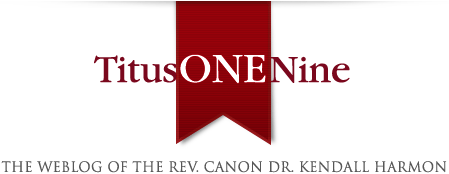This section of the poem offers two images of Mary, each extraordinary in its own way. Elsewhere among the Advent Lyrics, Mary is the subject of ‘O virgo virginum’ and of the dialogue which begins ‘O Joseph’; the latter brings to life the tension and pain in the story of her child-bearing, dramatising the anguished thoughts of a couple who have had a world-changing miracle erupt in the middle of their marriage. That’s an emotional, intimate conversation – the Incarnation as personal human drama.
This poem gives us a very different view of Mary. Here she is a queen, and on a cosmic scale – ruler of the forces of heaven, earth, and hell. God and Mary are described in language and tropes drawn from Anglo-Saxon heroic poetry: they are the brytta and his bryd, the generous ring-giving lord and his resolute queen. Described thus, they might easily be Hrothgar and Wealhtheow in Beowulf, or even Cnut and Emma. Like many another woman in Anglo-Saxon poetry, Mary is a bride ‘adorned with rings’ (beaga hroden), but this bride is far from a passive figure: she is courageous and determined (þristhycgende, ‘steadfast in mind’). This poem frames her situation in a distinctive way, presenting it as if she has decided to undertake a diplomatic mission from earth to heaven. Though literally this decision is made when she accepts Gabriel’s message to her, the poem describes it as if she set out to travel on a journey to unite herself with God…
'You are the door in the wall…
— Eleanor Parker (@ClerkofOxford) December 24, 2024
Intercede for us now, bold in your words,
that he may not allow us any longer
to go astray in this deadly valley.'
An Anglo-Saxon poem to Mary, queen of three realms, door in the wall between the worlds: https://t.co/kg1YIeyOjQ pic.twitter.com/L23OPaM7df
